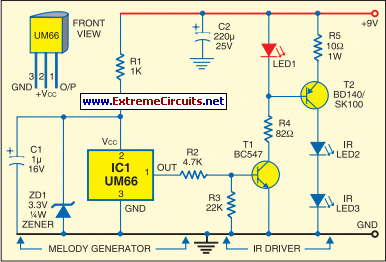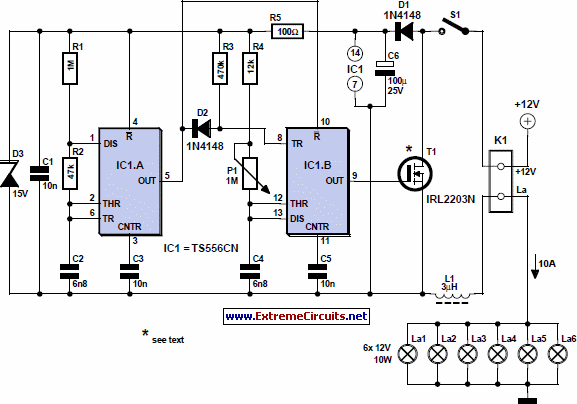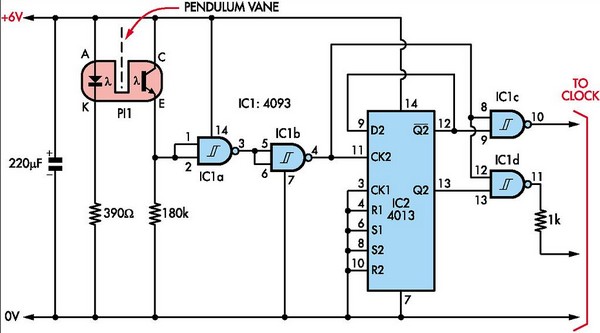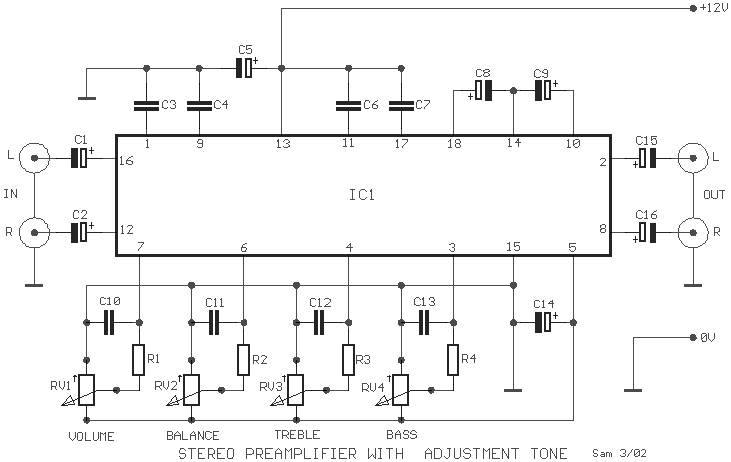
LED dimmer circuit
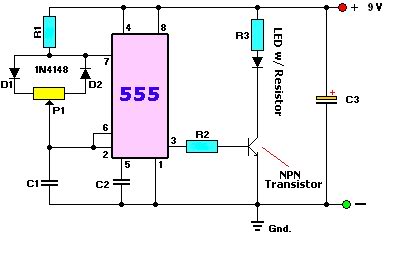
A user is new to the forum and has limited experience in DIY electronics. The current project involves creating a battery-powered LED dimmer circuit.
The objective of the project is to design a battery-operated LED dimmer circuit that allows for adjustable brightness levels of LED lights. This circuit typically employs a pulse-width modulation (PWM) technique to control the power delivered to the LED, thus varying its brightness.
The basic components of the circuit include a microcontroller (such as an Arduino or a similar platform), a MOSFET or transistor for switching, a potentiometer for user input, and the LED itself. The microcontroller generates a PWM signal based on the resistance value of the potentiometer, which the user can adjust to set the desired brightness level.
The circuit design should include the following elements:
1. **Power Supply**: A battery pack that provides the necessary voltage and current for the circuit. Common choices include AA batteries or a lithium-ion battery pack, depending on the required operating voltage.
2. **Microcontroller**: A suitable microcontroller that can handle PWM output. The microcontroller should be programmed to read the potentiometer value and adjust the PWM signal accordingly.
3. **Potentiometer**: A variable resistor that allows the user to change the resistance and, consequently, the brightness of the LED. A linear potentiometer is commonly used for this purpose.
4. **Switching Device**: A MOSFET or bipolar junction transistor (BJT) is used to control the current flowing through the LED. The gate or base of the switching device is connected to the PWM output of the microcontroller.
5. **LED**: The light-emitting diode that will be dimmed. The LED should be rated for the voltage used in the circuit, and appropriate current-limiting resistors may be necessary to prevent damage.
6. **Protection Components**: It is advisable to include components such as diodes for flyback protection if inductive loads are involved, and capacitors for smoothing out voltage fluctuations.
The schematic should clearly show the connections between these components, indicating the power supply connections, the PWM output to the MOSFET, and the feedback loop from the potentiometer to the microcontroller. Proper consideration should be given to the ratings of all components to ensure safe and reliable operation of the dimmer circuit.Hi folks. I`m new to the forum and relatively new to diy electronics. My current project involves trying to make a battery-powered LED dimmer circuit. .. 🔗 External reference
The objective of the project is to design a battery-operated LED dimmer circuit that allows for adjustable brightness levels of LED lights. This circuit typically employs a pulse-width modulation (PWM) technique to control the power delivered to the LED, thus varying its brightness.
The basic components of the circuit include a microcontroller (such as an Arduino or a similar platform), a MOSFET or transistor for switching, a potentiometer for user input, and the LED itself. The microcontroller generates a PWM signal based on the resistance value of the potentiometer, which the user can adjust to set the desired brightness level.
The circuit design should include the following elements:
1. **Power Supply**: A battery pack that provides the necessary voltage and current for the circuit. Common choices include AA batteries or a lithium-ion battery pack, depending on the required operating voltage.
2. **Microcontroller**: A suitable microcontroller that can handle PWM output. The microcontroller should be programmed to read the potentiometer value and adjust the PWM signal accordingly.
3. **Potentiometer**: A variable resistor that allows the user to change the resistance and, consequently, the brightness of the LED. A linear potentiometer is commonly used for this purpose.
4. **Switching Device**: A MOSFET or bipolar junction transistor (BJT) is used to control the current flowing through the LED. The gate or base of the switching device is connected to the PWM output of the microcontroller.
5. **LED**: The light-emitting diode that will be dimmed. The LED should be rated for the voltage used in the circuit, and appropriate current-limiting resistors may be necessary to prevent damage.
6. **Protection Components**: It is advisable to include components such as diodes for flyback protection if inductive loads are involved, and capacitors for smoothing out voltage fluctuations.
The schematic should clearly show the connections between these components, indicating the power supply connections, the PWM output to the MOSFET, and the feedback loop from the potentiometer to the microcontroller. Proper consideration should be given to the ratings of all components to ensure safe and reliable operation of the dimmer circuit.Hi folks. I`m new to the forum and relatively new to diy electronics. My current project involves trying to make a battery-powered LED dimmer circuit. .. 🔗 External reference
